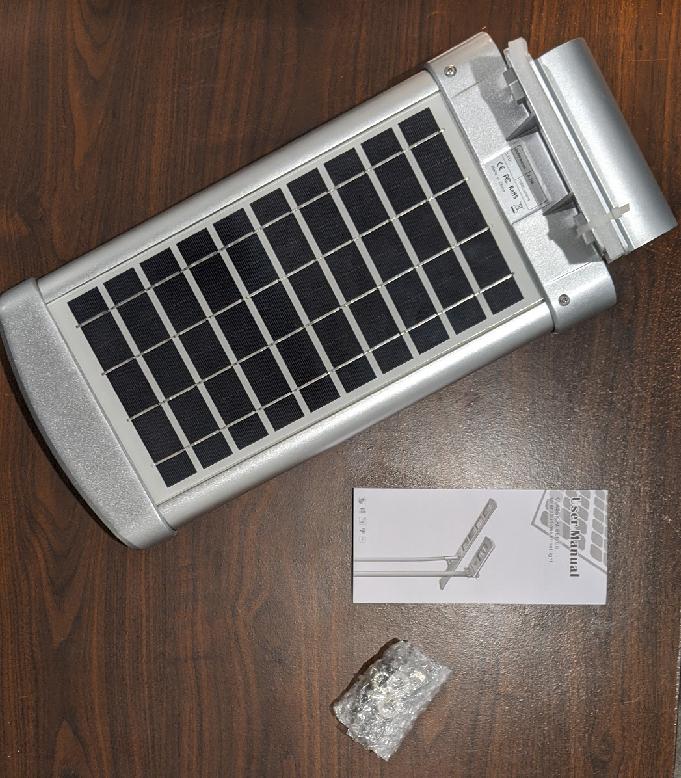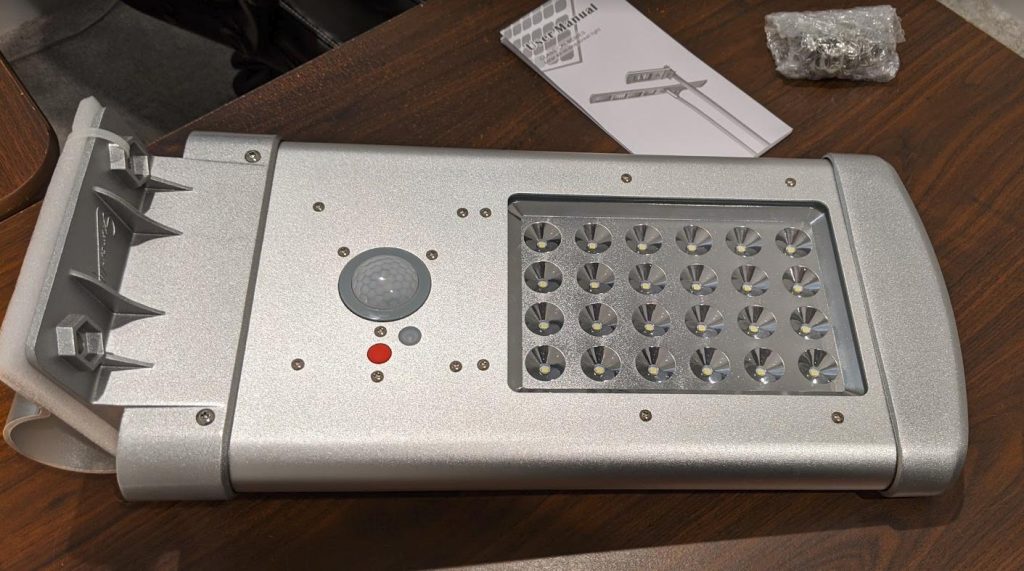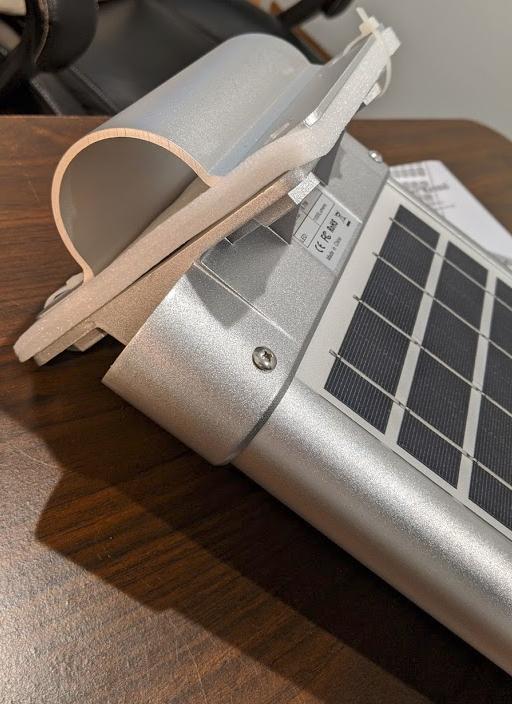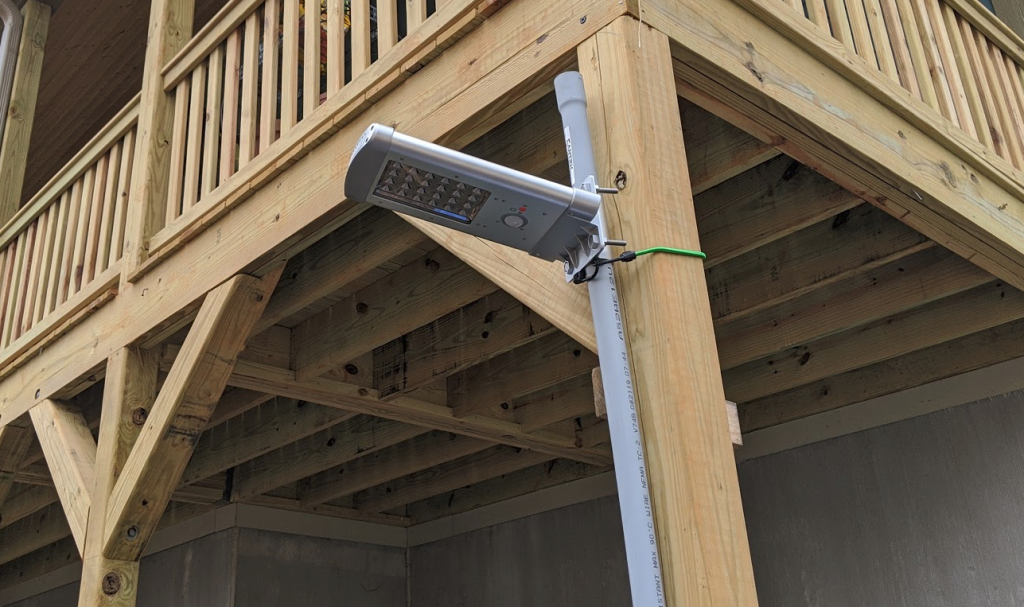
I was in need of outdoor lighting for the area outside my house where we park our cars. I didn’t really want to pay an electrician to come install the typical motion-activated flood lights, but with a stroke of luck, I got a hold of a great solution: a solar powered light from Deelat.
I have never heard of them either, but Deelat makes several types of environmentally friendly solar street lights. Some of them are relatively high-powered and suitable for neighborhoods. What I needed was something on the lesser end of the power spectrum, and the 1000 Lumens LED model seemed about right for my driveway.
What’s In The Box
Everything looked pretty simple when I opened the box, and the included instruction manual was actually a little too simple. There were acronyms in there I didn’t understand, and it didn’t really explain them anywhere. Maybe people who are used to these sorts of things know what they mean, but I do not.

There was a packet of mounting bolts included, though no screws if you were wanting to mount it to a flat surface.
I also noticed that the instruction manual mentioned a remote control, which would be really handy to have, but it doesn’t come standard.
The light can be mounted to a flat surface or to a pole. It looked like the pole would give me the best options for pointing it where I wanted it to go, as there is no way to adjust the direction or angle of the light itself.

Installation and Testing
I kinda improvised the mounting solution with a $5 PVC pipe I grabbed from the hardware store. I didn’t know if this light was going to be a good solution, so I didn’t want to commit to mounting it in a more permanent fashion. You can see what I did here:

I checked it out last night after mounting it, and it provided a great amount of light for the area of concern, even after it didn’t really spend much time out in the sun. I hope that will continue.
The one thing I wish I could do is tilt it or even pivot it around. Not only would this help me angle the light where I want it to go, it would help me angle it so the sun charges it up best.
I do like that it has a couple of different brightness modes that kick on when motion is detected. I’m still not sure what the difference between them is, as the instructions are a little unclear about that.
This might be a good option for you if you want something that doesn’t involve running wires, calling and electrician, or require much in the way of tweaking the direction the light points. I will probably end up mounting this in a more permanent way very soon.